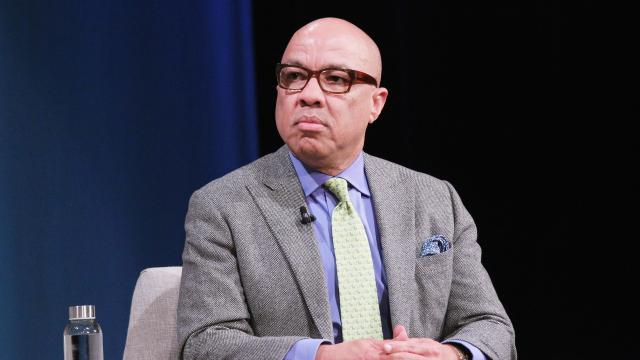IT'S CALLED SOCIALISM
Ford Foundation president: ‘We need a new form of capitalism’ to ‘level the playing field’
‘We are far from turning the corner, but we have begun to see some progress’: Darren Walker
Darren Walker, Ford Foundation President, joins Yahoo Finance’s Kristin Myers to discuss how the Ford Foundation has been paving the way for more equality in the United States, being one of the largest, private, charitable organizations in the country, and what has been changed since the murder of George Floyd.

The capitalist system is in the biggest need of reform in America, said Ford Foundation President Darren Walker.
A former banker, Walker said he is “a believer that there is no better mechanism to organize an economy than capitalism. But I also, as an advocate for capitalism, have to acknowledge its shortcomings— and the reality that in the United States, we have actually never given real capitalism a chance. What we need is a new form of stakeholder capitalism that recognizes the importance of all stakeholders, including employees, the communities, and suppliers."
Walker said "the actual boardroom of corporations needs to change. If you look, a year ago, we had a third of the S&P that did not even have a single African-American director. I can assure you that if you do not have representation at the board, you are not likely to see material, sustainable change at the C-suite and within the company more broadly.”
"We've got to change the rules of the game so that people have an opportunity to compete on a level playing field,” he said.
Walker believes that last year was one of “racial reckoning of the kind we have never seen in this country, and certainly in our lifetimes,” as major companies acknowledged that “corporate America has failed Black America.”
“So there has been huge disappointment. And that disappointment was manifest in 2020. But the encouraging thing that came out of 2020 was the strong statements — Black Lives Matter and other statements by CEOs — with concrete, measurable objectives attached that give us time now, one year later, to assess just how much progress has been made.”
But despite the progress, Walker said, “We are far from turning the corner. But I do think we have begun to see some progress and some reasons for hope.”
'Hope is the oxygen of democracy'
In order for the American Dream to continue, the question wealthy and privileged people must ask is how much money and power they are willing to give up, Walker said.
“I am lucky enough to live in a country where a poor kid like myself could be born in the bottom 1% and find myself in the top 1%. And that can only happen in America,” he explained. “But if we want that to continue to happen, we have to not hoard all the privileges and all of the assets.”
In order for the “opportunity ladder” to continue to work, Walker explained, “we've got to have a system that does not compound the advantage of the already-advantaged, and compound the disadvantage of the already disadvantaged — and particularly the historically disadvantaged.”
“So we have to look at what are the systems that produce and reproduce inequality," Walker said. "Those systems are our education system, our access to capital systems, financial systems, and say, what do we need to do to change those systems?”
There’s something “fundamentally wrong,” he said, with a system where during a pandemic, privileged Americans are “better off” than most Americans that suffered financially. “We need to ask some questions to ensure that we still leave hope on the table. At the end of the day, the American dream of hope and aspiration is what fuels our society. Hope is the oxygen of democracy.”
“And if we allow it, hopelessness will be the end of our society,” Walker said. “And I believe in this country. I know there is no other nation like the United States of America, and my loyalty and faith in it is unwavering. But I also am sobered by the reality of what I see in this country, which is far too much inequality.”
Kristin Myers is a reporter and anchor for Yahoo Finance. Follow her on Twitter.










